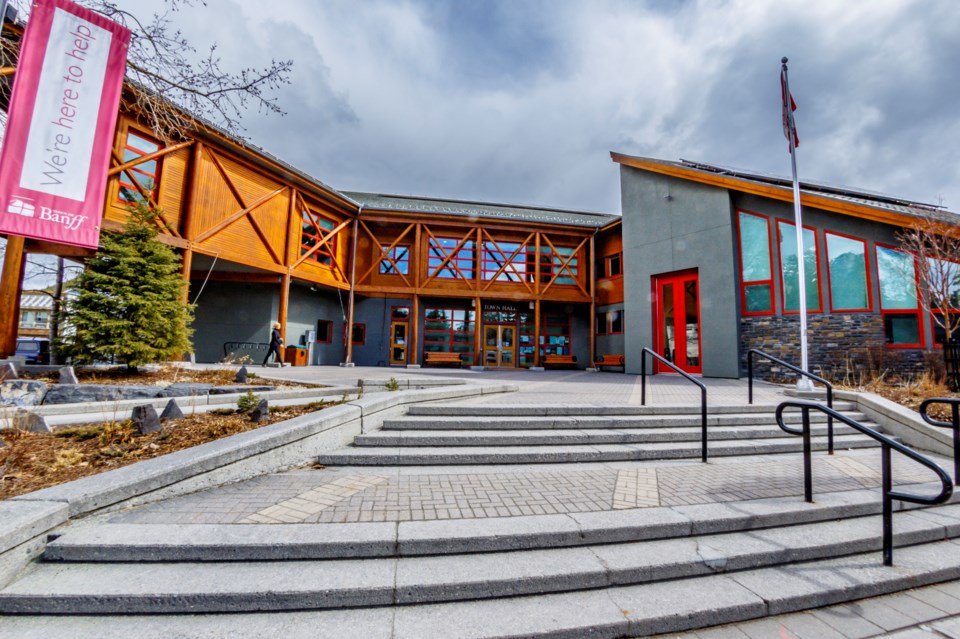BANFF – The Town of Banff is projecting a drop in revenue from development permits in the coming years.
Revenue from development and building permits was about $643,630 in 2023 and is estimated to dip to $444,000 in 2024.
Officials say revenue is trending down in anticipation of a drop in building and development and sidewalk seating permit activity to more historical levels and removal of the pedestrian zone – depending on the outcome of that discussion.
“We saw a tremendous amount of development and building activity during and post-COVID,” said Chris Hughes, director of corporate services for the Town of Banff during service review on Dec. 6.
“We are anticipating that to slow somewhat over the next few years, so revenues are anticipated to drop.”
There were 91 development permits received in 2019, 64 in 2020, 93 in 2021, 77 in 2022 and 75 so far in 2023.
The total estimated value of construction was $77,490,617 in 2019; $36,814,022 in 2020, $70,721,766 in 2021, $13,253,517 in 2022, and $19,189,846 so far in 2023.
Darren Enns, director of planning and environment for the Town of Banff, said the department is challenged by perceptions in the community around commercial growth management as it relates to development permits.
“I did want to do some myth-busting. … I’ve heard in the community this murmuring that commercial development allotments are related to development permits, and so I wanted to quantify our perception about that relationship,” he said.
The planning department’s review of development permits over the past 10 years revealed the ones associated with commercial growth management accounted for 0.6 per cent.
In 1998, the federal government capped the amount of additional commercial development at 350,000 square feet, which was subsequently handed out by way of a lottery system.
“Of all the development permits that come across our planners’ desks, 0.6 per cent are associated with commercial development, so I want to be really clear that relationship is tenuous, if non-existent,” said Enns.
“Most of the things we do are completely unrelated to commercial development, and they’re related to things like change of use, redevelopment of existing buildings, residential applications and so that is the majority of what we do and I want to make sure we left this meeting understanding that.”
Proposed changes to housing policies and the land use bylaw – if approved by town council – are expected to drive residential development in the next few years as the municipality seeks to close the gap on a housing shortfall of between 700 and 1,000 units.
Proposals include increasing density, allowing secondary suites in all land-use districts as a permitted use, and residential parking reforms to help lower costs of housing developments.
The Town is also investigating construction of a 250-unit affordable housing project on a 2.34-hectare site on the benchlands at Tatanga Ridge, with a mix of rentals and for-purchase housing.
With none of this certain at this stage, Enns said his department has been conservative in its revenue projections for development and building permits.
“It’s not being pessimistic, it’s just trying to be conservative in our budgeting on revenue,” Enns said, adding the governance and finance committee previously directed administration to look at financial tactics to encourage housing development, including a re-look at fees.
“Yes, we think activity will increase, but if council makes a change in direction on the fee structure, then we might not realize the revenue that we would have realized otherwise.”
The Town Banff is hoping to tap into the $4 billion nationwide initiative known as the Housing Accelerator Fund (HAP) to help get housing built; however, there has been no word yet on the success of the municipality’s application.
Should more housing projects come to fruition as a result of the proposed changes, Enns said an increase in development permit activity would affect the department’s capacity, but some of the HAP funding, if successful, would pay for a two-term contract position to deal with any increased volumes.
“I would say on the development permit side, yes, we have angst about the capacity if we ramp things up, but we also have an answer in terms of a response,” he said.
“I want to make sure council is aware that that is something you’ve already given us guidance on and we would bring back to you once we have clarity around HAP funding.”




